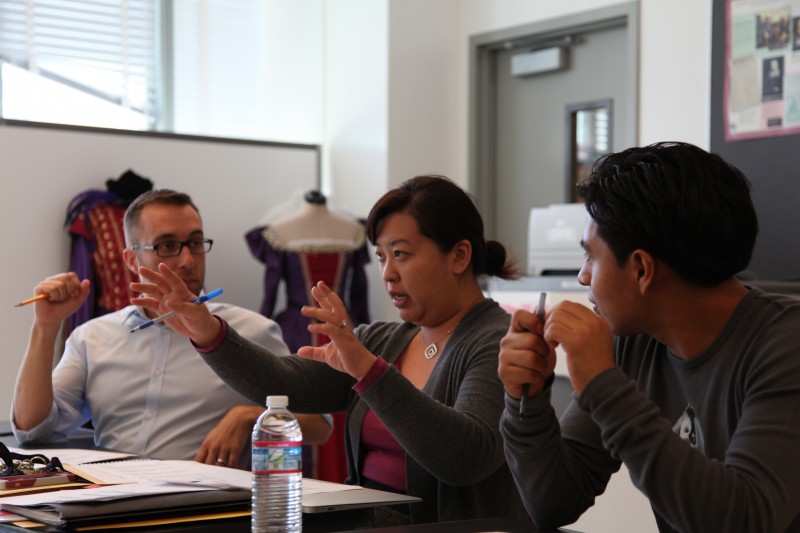What Research Can Help Your Students Score Higher on the Upcoming BIG Tests?

This month, we’ll focus on how to prepare for existing state and national tests. I’ll focus on three things that can help your students improve their chances to score up to their potential. By the way, kids never score above their potential; they’re just not going to randomly make enough lucky right answers time after time after time (in statistics, it’s called regression to the mean).
But, they often underperform for a host of reasons, even when they should perform much better. While we could focus on dozens of variables that influence standardized testing, we’ll focus on these three: 1) brain chemistry, 2) priming, and 3) episodic memory triggers. Some of these suggestions got so many rave reviews that they are reproduced from an earlier bulletin!
The Research
Ten Minutes to Better Scores
Two laboratory and two randomized field studies tested a psychological intervention designed to improve students’ scores on high-stakes exams. These simple ten-minute activities can raise test scores. One well-designed study showed that writing about testing worries prior to taking the exam boosts exam performance in the classroom.
The study authors expected that sitting for an important exam leads to worries about the situation and its consequences that undermine test performance. What the authors tested was… whether having students write down their thoughts about an upcoming test could improve test performance.
This simple intervention, a brief expressive writing assignment that occurred immediately before taking an important test, significantly improved students’ exam scores, especially for students habitually anxious about test taking. Simply writing about one’s worries before a high-stakes exam can boost test scores. It does it by more than 10% and it’s quick and free (Ramirez G, Beilock, SL., 2011).
Brain Chemistry and Testing There are three chemicals to focus on for optimal testing results: 1) dopamine (it generally facilitates informational transfer within limbic and cortical networks to promote working memory and reward-seeking behavior, says Luciana, et al. 1998), 2) noradrenaline (it generally promotes a more narrowed focus, sharper attention and improved memory. This system plays a specific role in the regulation of cognitive functions, including sustained attention, working memory, impulse control, and the planning of voluntary behavior), and 3) glucose (it provides short term energy and, in low to moderate doses, promotes enhanced memory (Krebs DL, Parent MB., 2005).
The Power of Suggestion
Can you influence testing outcomes by “prepping” their brain for success? It has long been proposed that motivational responses that were subtle could serve as priming to effect academic performance. A recent study showed that yes, it can be done and they can show you how to do it. “You can prep the brain several ways. One is by showing them the letter “A” in advance.” (I’ll tell you “how” in a moment.) The other one of our two “prepping” studies is to give peppermints to all kids for your final review, then use them again at the time of the big test. (Barker, et al. 2003). This raises attentional levels and provides glucose.
Location of the Test Itself
I have always advocated that we ensure that students taking the test take it in the room in which they studied for it. That’s the power of episodic or content memory. But, there’s more to it. Stress is an issue, too. Stress impaired memory when assessed in the unfamiliar context, but not when assessed in the learning context (Schwabe L., and Wolf OT, 2009). In short, if your students can’t be in the test-givers room to learn the material, at least bring them into the testing room and do a review there days before the event.
Practical Applications
Let’s “flesh out” each of the studies listed above. The first category is about enhancing brain chemicals. This is fairly easy to do.
Dopamine can be strengthened by 1) voluntary gross motor repetitive movements, like marching, relays, playing a game. It is enhanced by strong positive feelings like reunions and celebrations. Most of all, it’s enhanced by looking forward to something very good.
Norepinephrine is enhanced by 1) risk, like a student speaking in front of his/her peers, 2) urgency, like serious deadlines for compelling tasks, and 3) excitement, like theater, competition, comedy, the arts.
Glucose is enhanced by 1) food sources: complex carbs are best, but almost any source can do in a pinch, 2) physical activity: glucose is stored in the liver in the form of glycogen and released in the form of glucose, and 3) any time we are experiencing emotions.
The study that I mentioned earlier used peppermint odor during simple skill practice, performance, memorization, and alphabetization. Participants completed the protocol twice–once with peppermint odor present and once without. Analysis indicated significant differences in the gross speed, net speed, and accuracy on the task, with odor associated with improved performance. The study results suggest peppermint odor may promote a general arousal of attention, so participants stay focused on their task and increase performance.
The Power of Suggestion
You can influence testing outcomes by “prepping” their brain for success with a positive suggestion. Sound like Star Trek “Vulcan” Mind Control? Or, is it more like “Obi Wan Kenobe”? It’s neither. It has long been proposed that motivational responses that were subtle could serve as priming to affect academic performance. The research study I mentioned above was conducted at a large research university in the USA. Here is what they started with:
23 undergraduates participated in Group 1 (were conducted in classroom settings)
32 graduate students in Group 2 (were conducted in classroom settings)
76 undergraduates in Group 3 (were conducted in laboratory setting)
The “mind games” manipulation came in the form of a “Test Bank ID code” (completely phony) on the cover of a test. The ID Code was needed because participants were prompted to view and write it on each page of their test. The letters used were “A” (the positive priming for group 1), “F” (the negative priming for group 2) and “J” (the neutral, control group 3). Students who got the “A” on their ID Code outperformed BOTH the “F” on the code and the “J” control group. Students are vulnerable to evaluative letters presented before a task, these results support years of research highlighting the significant role that our nonconscious processes play in achievement settings.
Location of the Test Itself
Stress before retention testing impairs memory, whereas memory performance is enhanced when the learning context is reinstated at retrieval. As a general rule, low-moderate stress is best for encoding and for retrieving, it is best to match the encoding stress level. I have always advocated that we ensure that students taking the test take it in the room in which they studied for it. That’s the power of episodic or content memory.
But there’s more to it. Stress is an issue, too.
The study examined whether the negative impact of stress before memory retrieval can be attenuated when memory is tested in the same environmental context as that in which learning took place. These results suggest that the detrimental effects of stress on memory retrieval can be abolished when a distinct learning context is reinstated at test.
Stress impaired the student’s memory when assessed in the unfamiliar context, but not when assessed in the learning context (Schwabe L., and Wolf OT., 2009). In short, if your students can’t be in the test-givers room to learn the material, at least, bring them into the testing room and do a review there days before the event.
Combine for Positive Synergy
Remember, the science is solid when you consider each strategy separately. But combined, these strategies may help you get to the next level. As Chef Emeril would say they could give you “BAM!” power.
BONUS: Here’s what to do after the interim tests (but before the big “Standards Tests”). We know that reflection and meta thinking can be powerful. Debbie Barber, a sixth grade teacher at Ackerman Middle School in Canby, Oregon says, “My kids have a chance to improve their scores by doing a test autopsy. They correct their mistakes and then write a half page reflection on why they did so poorly and what they should have done differently. They earn a half point for each corrected answer. Not only do the parents love it, the test scores have improved and the students are really taking ownership of their work!”
This is the potential of smarter, targeted teaching. But you have to commit to the process and ensure that it gets done. Don’t let anyone say, “I’ve heard of all that!” Get your staff on board and start making miracles. Is this awesome or not?
Let’s cut to the chase: everything you do in your classroom is likely to have SOME effect on the brain. Brain-based education says, “Be purposeful about it.” Now, go have some fun and make another miracle happen!
Research:
- Barker S, Grayhem P, Koon J, Perkins J, Whalen A, Raudenbush B. Improved
performance on clerical tasks associated with administration of peppermint odor.
Percept Mot Skills. 2003 Dec;97(3 Pt 1):1007-10. - Arnsten AF. Through the looking glass: differential noradrenergic modulation of prefrontal cortical function. Neural Plast. 2000;7:133–46. [PubMed]
- Ciani KD, Sheldon KM. (2010) A versus F: the effects of implicit letter priming on cognitive performance. Br J Educ Psychol. Mar;80(Pt 1):99-119.
- Fulkerson, F. E.; and G. Martin. 1981. Effects of exam frequency on student performance, evaluations of instructor, and test anxiety. Teaching of Psychology; April, 8(2): 90-93.
- Krebs DL, Parent MB. (2005) The enhancing effects of hippocampal infusions of glucose are not restricted to spatial working memory. Neurobiol Learn Mem. Mar;83(2):168-72.
- Luciana, M., Collins, PF and RA Depue (1998) Opposing roles for dopamine and serotonin in the modulation of human spatial working memory function Cerebral Cortex Volume 8, Number 3, Pp. 218-226.
- Schwabe, L, Wolf OT. (2009) The context counts: congruent learning and testing
environments prevent memory retrieval impairment following stress. Cogn Affect
Behav Neurosci. Sep;9(3):229-36. - Ramirez G, Beilock, SL. Writing about testing worries boosts exam performance
in the classroom. Science. 2011 Jan 14;331(6014):211-3.


























 This is still a top selling book on how learning best takes place in the classroom. Download it from Amazon. You won’t be sorry!
This is still a top selling book on how learning best takes place in the classroom. Download it from Amazon. You won’t be sorry!
Consider the implications to students in small group testing. This is powerful information.